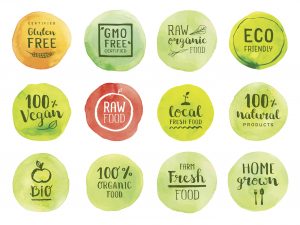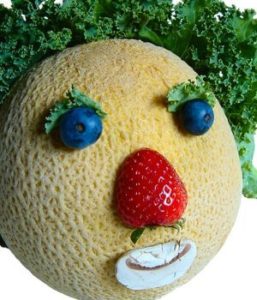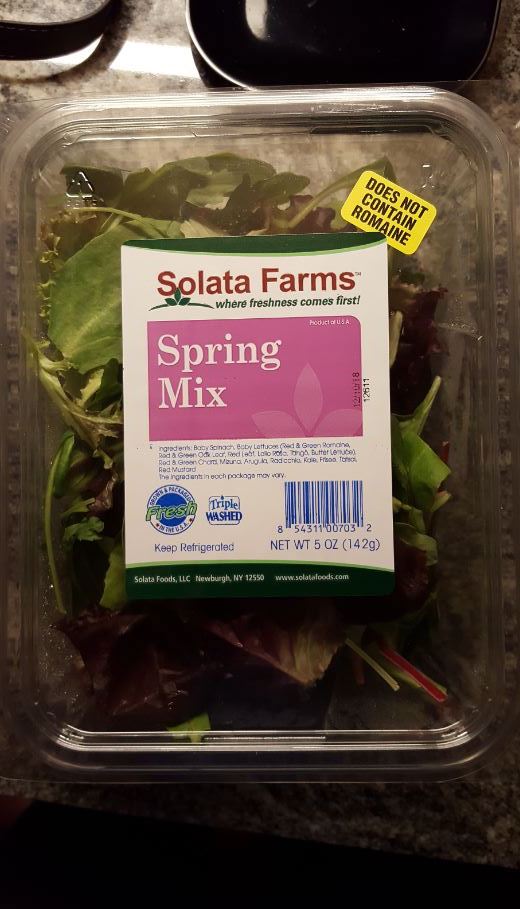Tag Archives: Marketing
(Reverse) marketing food safety
Sounds like marketing: Food safety culture for economic gain
Research into the connection between organizational effectiveness and culture has been documented since the early nineteen nineties. A connection between economic performance and organizational culture has been established directly linking strong cultural drivers to economic performance in both the finance and retail sectors.
 This research proposes a similar association between food safety culture, the measures of maturity and cost of poor quality. Through data collected at five multi-national food companies, this association is explored, and an improved food safety maturity model suggested.
This research proposes a similar association between food safety culture, the measures of maturity and cost of poor quality. Through data collected at five multi-national food companies, this association is explored, and an improved food safety maturity model suggested.
The authors also propose a dynamic model of food safety culture, segmenting it into 4 building blocks: I. Organizational effectiveness, II. Organizational culture norms, III. Working group learned and shared assumptions, and behaviours, and IV. Individual intent and behaviours; and discuss the crucial role of actions between building blocks as part of the pathway to realizing economic gain.
The impact of maturing food safety culture and a pathway to economic gain
19.nov.18
Food Control, https://doi.org/10.1016/j.foodcont.2018.11.041
Lone Jespersen, John Butts, Greg Holler, Jeff Taylor, Dave Harlan, Mansel Griffiths, Carol Wallace
How to stop food sabotage
Last Sunday, Sept. 16, 2018, I had a requested op-ed published in the Sydney Morning Herald. I was a little rusty, so Amy did more than just clean it up, and I haven’t gotten around to posting it until now because there was some medical stuff last week, but all is well and here it is:
My 9-year-old daughter and I were watching the news on Saturday morning and she asked, why would someone put a needle in strawberries?
A couple of years ago a food safety type asked me, what’s the biggest risk to the food supply.
I didn’t hesitate.
Deliberate tampering and food fraud.
Food safety has traditionally been faith-based – especially when it comes to fresh fruit and vegetables. Consumers cannot control how food is handled before it gets to them. This is why consumers need to know their suppliers and know what they are doing to keep people safe.
This latest food tampering scare – 11 cases of contaminanted strawberries reported nationally so far, the first in Sydney on Saturday – makes that clear.
Faith-based food safety sucks. It always has. Risks have always been present. As Madeleine Ferrieres, the author of Mad Cow, Sacred Cow: A History of Food Fears, wrote, “All human beings before us questioned the contents of their plates.”
But contemporary consumers forget that contamination risk has always been with us: “We are often too blinded by this amnesia to view our present food situation clearly. This amnesia is very convenient. It allows us to reinvent the past and construct a complaisant, retrospective mythology.”
“We still live with the illusion of modernity, with the false idea that what happens to us is new and unbearable,” she has said in an interview.
What’s new is that we have better tools to detect problems. This also presents an opportunity: those who use the best tools should be able to prove their food is safe through testing and brag about it. They can market food safety measures at retail.
The days of faith-based food safety are coming to a protracted close.
There is a lack – a disturbing lack – of on-farm food safety inspection; farmers need to be more aware of the potential for contamination from microbes (from listeria in rockmelon, for example) as well as sabotage.
There is an equally large lack of information to consumers where they buy their produce. What do Australian grocery shoppers know of the food safety regulations applied to the produce sold in their most popular stores? Who can they ask to find the answers?
The best solution is for farmers and retailers to market food safety. If they have a great food safety program they should be promoting it. Consumers can handle more information rather than less.
Douglas Powell is a (sorta?) retired professor of food safety in Canada and the US who now lives in Brisbane. He blogs at barfblog.com.
And in memorandum, Matt ‘Guitar’ Murphy, the Blues Brothers’ guitarist and longtime blues sideman who died Friday at 88.
Market food safety? Grocers group loses members amid industry culture crash
Dan Charles of NPR writes that for at least the past decade, the Grocery Manufacturers Association (GMA) has been the unrivaled voice of a vast industry, from neighborhood grocery stores to food manufacturing giants with supply chains that span the globe. Most recently, it’s been a powerful force in fighting proposals to require information about added sugar or GMOs on food labels.
 Today, that colossus is teetering and facing questions about its future. Over the past six months, eight of GMA’s largest members have decided to drop their membership. Each defection was quickly revealed on the news site Politico. One industry insider says that he’s seen a list of another three companies that are considering leaving the association.
Today, that colossus is teetering and facing questions about its future. Over the past six months, eight of GMA’s largest members have decided to drop their membership. Each defection was quickly revealed on the news site Politico. One industry insider says that he’s seen a list of another three companies that are considering leaving the association.
Although the reasons, in most cases, remain unclear, several of the defections raise questions about whether the food industry is capable of speaking with one voice anymore, as companies respond to contradictory demands from consumers.
That’s because they can’t speak with one voice.
Where is the company that will market microbial food safety?
Food fraud: Inside global bullshit about spices
A bowl of ice cream on a hot day in Shanghai gave American Mitchell Weinberg the worst bout of food poisoning he can recall. It also inspired the then-trade consultant to set up Inscatech — a global network of food spies.
 In demand by multinational retailers and food producers, Inscatech and its agents scour supply chains around the world hunting for evidence of food industry fraud and malpractice. In the eight years since he founded the New York-based firm, Weinberg, 52, says China continues to be a key growth area for fraudsters as well as those developing technologies trying to counter them.
In demand by multinational retailers and food producers, Inscatech and its agents scour supply chains around the world hunting for evidence of food industry fraud and malpractice. In the eight years since he founded the New York-based firm, Weinberg, 52, says China continues to be a key growth area for fraudsters as well as those developing technologies trying to counter them.
“Statistically we’re uncovering fraud about 70 percent of the time, but in China it’s very close to 100 percent,” he said. “It’s pervasive, it’s across food groups, and it’s anything you can possibly imagine.”
While adulteration has been a bugbear of consumers since prehistoric wine was first diluted with saltwater, scandals in China over the past decade — from melamine-laced baby formula, to rat-meat dressed as lamb — have seen the planet’s largest food-producing and consuming nation become a hotbed of corrupted, counterfeit, and contaminated food.
Weinberg’s company is developing molecular markers and genetic fingerprints to help authenticate natural products and sort genuine foodstuffs from the fakes. Another approach companies are pursuing uses digital technology to track and record the provenance of food from farm to plate.
“Consumers want to know where products are from,” said Shaun Rein, managing director of China Market Research Group, citing surveys the Shanghai-based consultancy conducted with consumers and supermarket operators.
Services that help companies mitigate the reputational risk that food-fraud poses is a “big growth area,” according to Rein. “It’s a great business opportunity,” he said. “It’s going to be important not just as a China play, but as a global play, because Chinese food companies are becoming part of the whole global supply chain.”
Some of the biggest food companies are backing technology that grew out of the anarchic world of crypto-currencies. It’s called blockchain, essentially a shared, cryptographically secure ledger of transactions.
Wal-Mart Stores Inc., the world’s largest retailer (and source off the terrible graphic, above, right), was one of the first to get on board, just completing a trial using blockchain technology to track pork in China, where it has more than 400 stores. The time taken to track the meat’s supply chain was cut from 26 hours to just seconds using blockchain, and the scope of the project is being widened to other products, said Frank Yiannas, Wal-Mart’s vice president for food safety, in an interview Thursday.
But will it be advertised at retail, or just some faith consumers will be forced to rely on.
Real transparency means reals data, shared publicly; it’s not a matter of faith.
Where’s the fun in that? BPI settles with ABC in pink slime defamation case
There’s no settlement details; both sides claim victory; lawyers get rich – pink slime and media are both disappointing.
BPI said: “We are extraordinarily pleased to have reached a settlement of our lawsuit against ABC and Jim Avila. While this has not been an easy road to travel, it was necessary to begin rectifying the harm we suffered as a result of what we believed to be biased and baseless reporting in 2012. Through this process, we have again established what we all know to be true about Lean Finely Textured Beef: it is beef, and is safe, wholesome, and nutritious. This agreement provides us with a strong foundation on which to grow the business, while allowing us to remain focused on achieving the vision of the Roth and BPI family.”
ABC said, “ABC has reached an amicable resolution of its dispute with the makers of ‘lean finely textured beef.’ Throughout this case, we have maintained that our reports accurately presented the facts and views of knowledgeable people about this product. Although we have concluded that continued litigation of this case is not in the Company’s interests, we remain committed to the vigorous pursuit of truth and the consumer’s right to know about the products they purchase.”
This after three weeks of jury trial and testimony in a courtroom in South Dakota.
What can be learned?
Not much that isn’t already known.
People want to know about their food. Where it was grown, how, what’s been added and if it’s safe.
The N.Y. Times, as usual, gets that little bit right in a commentary in 2012, but wrongly thinks right-to-know is something new, that media amplification is something new because of shiny new toys, and offers no practical suggestions on what to do.
The term pink slime was coined in 2002 in an internal e-mail by a scientist at the Agriculture Department who felt it was not really ground beef. The term was first publicly reported in The Times in late 2009.
In April 2011, celebtard chef Jamie Oliver helped create a more publicly available pink slime yuck factor and by the end of 2011, McDonald’s and others had stopped using pink slime.
 On March 7, 2012, ABC News recycled these bits, along with some interviews with two of the original USDA opponents of the process (primarily because it was a form of fraud, and not really just beef).
On March 7, 2012, ABC News recycled these bits, along with some interviews with two of the original USDA opponents of the process (primarily because it was a form of fraud, and not really just beef).
Industry and others responded the next day, and although the story had been around for several years, the response drove the pink slime story to gather media momentum – a story with legs.
BPI said pink slime was meat so consumers didn’t need to be informed, and everything was a gross misunderstanding. BPI blamed media and vowed to educate public. Others said “it’s pink so it’s meat” and that the language of pink slime was derogatory and needed to be changed. USDA said it was safe for schools but quickly decided that schools would be able to choose whatever beef they wanted, pushing decision-making in the absence of data or labels to the local PTA. An on-line petition was launched.
Sensing the media taint, additional retailers rushed to proclaim themselves free of the pink stuff.
BPI took out a full-page ad in the Wall Street Journal, the favored reading choice for pink slime aficionados, and four mid-west governors banded together to repeat the same erroneous messages during a media-show-and-tell at a BPI plant. Because political endorsements rarely work, and the story had spread to the key demographic of burger eaters, others sensed opportunity in the trashing of BPI. Wendy’s, Whole Foods, Costco, A&P, Publix and others launched their own media campaigns proclaiming they’ve never used the stuff and never would.
 Guess they didn’t get their dude-it’s-beef T-shirts.
Guess they didn’t get their dude-it’s-beef T-shirts.
These well-intentioned messages only made things worse for the beef producers and processors they were intended to protect.
Here’s what can be learned for the next pink slime. And there will be lots more.
Lessons of pink slime
- don’t fudge facts (not really 100% beef?)
- facts are never enough, although facts are the underpinnings of journalism, ABC
- changing the language is bad strategy (been tried with rBST, genetically engineered foods, doesn’t work)
- telling people they need to be educated is arrogant, invalidates and trivializes people’s thoughts
- don’t blame media for lousy communications
- any farm, processor, retailer or restaurant can be held accountable for food production – and increasingly so with smartphones, facebook and new toys
- real or just an accusation, consumers will rightly react based on the information available
- amplification of messages through media is nothing new, especially if those messages support a pre-existing world-view
- food is political but should be informed by data
- data should be public
- paucity of data about pink slime that is publicly available make statements like it’s safe, or it’s gross, difficult to quantify
- relying on government validation builds suspicion rather than trust; if BPI has the safety data, make it public
- what does right-to-know really mean? Do you want to say no?
- if so, have public policy on how information is made public and why
- choice is a fundamental value
- what’s the best way to enable choice, for those who don’t want to eat pink slime or for those who care more about whether a food will make their kids barf?
- proactive more than reactive; both are required, but any food provider should proudly proclaim – brag – about everything they do to enhance food safety.
- perceived food safety is routinely marketed at retail; instead market real food safety so consumers actually have a choice and hold producers and processors – conventional, organic or otherwise – to a standard of honesty.
- if restaurant inspection results can be displayed on a placard via a QR code read by smartphones when someone goes out for a meal, why not at the grocery store or school lunch?
- link to web sites detailing how the food was produced, processed and safely handled, or whatever becomes the next theatrical production – or be held hostage
Is ‘best if used by’ better than ‘best before’
Kristen Leigh Painter of the Star Tribune reports date labels on food don’t quite represent the peril that people think.
 For years, foodmakers have put sell-by and use-by dates on a number of products. But some food experts and environmentalists have argued that people are throwing out perfectly good food because of those dates. And now, the U.S. Department of Agriculture agreed.
For years, foodmakers have put sell-by and use-by dates on a number of products. But some food experts and environmentalists have argued that people are throwing out perfectly good food because of those dates. And now, the U.S. Department of Agriculture agreed.
The department’s food safety division released new industry guidance that recommends that manufacturers use the phrase “best if used by” rather than “sell by” or “use by” when putting dates on food.
Infant formula is the only food product required by the U.S. Food and Drug Administration to date its products to ensure the nutrient levels match what is on the nutrition label.
No other products require dates, but manufacturers put them on labels to signal to retailers and consumers when products taste best. The USDA estimates that nearly one-third of all food is thrown away uneaten, something the agency is trying to reduce through better policies or simple packaging changes.
“Research shows that this phrase conveys to consumers that the product will be of best quality if used by the calendar date shown,” the USDA wrote in its guidance. “Foods not exhibiting signs of spoilage should be wholesome and may be sold, purchased, donated and consumed beyond the labeled ‘Best if Used By’ date.”
Because the U.S. has no uniform date labeling standard, a variety of terms are used. A “sell-by” date is not a safety issue but is meant to help a retailer know how long to display a produce for sale. A “use-by” date is also not a safety issue, but is the last date recommended to consumers for peak quality.
This guidance is part of the Agriculture Department and Environmental Protection Agency’s goal of reducing food waste by 50 percent by 2030, an initiative announced last year.
The USDA says food can be consumed after its “best if used by” date so long as there are no signs of spoilage.
“Spoiled foods will develop an off odor, flavor or texture due to naturally occurring spoilage bacteria. If a food has developed such spoilage characteristics, it should not be eaten,” wrote the USDA.
The exception is pathogenic bacteria, which is undetectable. If an unlucky consumer purchases a food product carrying this pathogen, however, the expiration date won’t protect them regardless.
Pay attention to microbial food safety, that’s what makes people barf: Whole Foods and now Panera, back with the pseudoscience
The gang at Don’t eat the Pseudoscience have taken a well-deserved shot at Panera.
But they can tell their own story (tone it down on the use of exclamation marks; let the reader decide what is truly exclamatory).
 Between tromping through Baguette Falls while whacking out azodicarbonamide, glycerides, artificial colors, and artificial flavors (i.e. amyl alcohol and benzaldehyde), and gallivanting around Crisp Valley Farms spotting the unwanted “No-Nos” trespassing on the property (i.e. hydrolyzed protein, polydextrose, MSG, and sodium erythorbate), Panera Bread continues its pursuit in educating consumers on the perils of “artificial” food additives and preservatives while feeding the pseudoscience madness in a cute new game. Of course, don’t forget the unusual/artificial “alien” sounds accompanying the destruction of each chemical. Luckily for the consumer, upon winning and defeating the awful droves of supposedly detrimental and awful food additions, one wins a coupon.
Between tromping through Baguette Falls while whacking out azodicarbonamide, glycerides, artificial colors, and artificial flavors (i.e. amyl alcohol and benzaldehyde), and gallivanting around Crisp Valley Farms spotting the unwanted “No-Nos” trespassing on the property (i.e. hydrolyzed protein, polydextrose, MSG, and sodium erythorbate), Panera Bread continues its pursuit in educating consumers on the perils of “artificial” food additives and preservatives while feeding the pseudoscience madness in a cute new game. Of course, don’t forget the unusual/artificial “alien” sounds accompanying the destruction of each chemical. Luckily for the consumer, upon winning and defeating the awful droves of supposedly detrimental and awful food additions, one wins a coupon.
Panera Bread LLC introduced its “No-No List” in 2015 in an effort to be more transparent and to provide clean menu options. Complete with a video campaign, and now the “Land of Clean” game, the list focuses on chemicals and hard-to-pronounce additives that consumers find unfriendly at a glance. For example, the No-No list currently contains compounds like MSG, autolyzed yeast extract, and glycerides. Additionally, the list has previously contained common chemicals like tocopherol (it’s actually Vitamin E) and ascorbic acid (Vitamin C). As a response to this misleading philosophy, we at Don’t Eat the Pseudoscience also came out with our own video to explain why these chemicals aren’t bad and how they already naturally occur in your food products.
Panera’s vision for transparency and healthfulness, while laudable, creates its own set of flaws by promoting pseudoscience through instilling fear of complex words in consumers. These changes and deletions of ingredients do not necessarily reflect positive, healthier options. A quick glance at Panera’s menu reveals some items that are not only rather high in calories – per serving – but may also approach one’s daily limits of sodium, saturated fat, and total fat. A few examples: a panini that is 1,040 kcal per serving with 46 grams of fat (out of 65g / day); another sandwich has 18g of saturated fat (out of 20g/day). Damn Panera…way to continue spreading the pseudoscience.
Another fairytale: Informed choice on food safety
The paper in Adelaide wrote an opinion piece last week about how consumers basically make faith-based decisions when it comes to food safety.
I recycled an old op-ed in response, and still wondering why the same issues haven’t gained traction after 20 years of publicity in Australia.
 The Advertiser editorial thingies wrote that irony can be really ironic, given that the government department charged with upholding and maintaining food standards in SA treats the public like mushrooms.
The Advertiser editorial thingies wrote that irony can be really ironic, given that the government department charged with upholding and maintaining food standards in SA treats the public like mushrooms.
By keeping the public in the dark by refusing to release the names of the 621 food outlets in breach of hygiene rules last year, SA Health is denying consumers the right to make an informed choice.
While it is good enough for the NSW State Government to identify offending premises, those who water their gardens with human effluent, sell out of date food and have cockroach-infested kitchens in SA apparently deserve anonymity.
There is more than a whiff of double standards surrounding the secrecy of the data held by SA Health.
On one hand (who writes this crap?), the public is not allowed to know which of their local fast food outlets is cutting food hygiene corners by selling six-day-old schnitzels, and on the other, it wasted no time last week issuing a warning about NT- grown rockmelons being the apparent source of a food poisoning outbreak in SA.
Surely the public is allowed to know the identity of a food retailer that has been found guilty of a major breach of food standards that could potentially have the same impact as eating the dodgy rockmelon.
For a food outlet to be warned several times about using effluent to water gardens simply beggars belief.
SA Health’s repeated warnings to the business owner were akin to being slapped with a wet lettuce leaf.
If such a practice can continue for such an extended period of time, the public can only wonder just what sort of heinous breach of food safety regulations a business must commit to be jumped on immediately.
My response was:
I coach little kids’ (ice) hockey in Brisbane.
For that voluntary pleasure, I had to complete 16 hours of certification training, in addition to the 40 hours of training I completed in Canada to coach a travel team.
To produce or serve food in Australia requires … nothing.
Restaurants and food service establishments are a significant source of the foodborne illness that strikes up to 20 per cent of citizens in so-called developed countries each and every year.
After helping develop and watching the mish-mash of federal, state and local approaches to restaurant inspection and disclosure in a number of western countries for the past 15 years, I can draw two broad conclusions:
- Anyone who serves, prepares or handles food, in a restaurant, nursing home, day care center, supermarket or local market needs some basic food safety training; and,
- the results of restaurant and other food service inspections must be made public.
There should be mandatory food handler training, for say, three hours, that could happen in school, on the job, whatever. But training is only a beginning. Just because you tell someone to wash the poop off their hands before they prepare salad for 100 people doesn’t mean it is going to happen; weekly outbreaks of hepatitis A confirm this. There are a number of additional carrots and sticks that can be used to create a culture that values microbiologically safe food and a work environment that rewards hygienic behavior. But mandating basic training is a start.
Next is to verify that training is being translated into safe food handling practices through inspection. And those inspection results should be publicly available.
A philosophy of transparency and openness underlies the efforts of many local health units across North America in seeking to make available the results of restaurant inspections. In the absence of regular media exposes, or a reality TV show where camera crews follow an inspector into a restaurant unannounced, how do consumers — diners — know which of their favorite restaurants are safe?
Cities, counties and states are using a blend of web sites, letter or numerical grades on doors, and providing disclosure upon request. In Denmark, smiley or sad faces are affixed to restaurant windows.
Publicly available grading systems rapidly communicate to diners the potential risk in dining at a particular establishment and restaurants given a lower grade may be more likely to comply with health regulations in the future to prevent lost business.
More importantly, such public displays of information help bolster overall awareness of food safety amongst staff and the public — people routinely talk about this stuff. The interested public can handle more, not less, information about food safety.
Even in New South Wales and Queensland, results are only posted voluntarily.
So if an outlet sucks at food safety, they don’t have to tell anyone.
Toronto, Los Angeles and New York have had mandatory disclosure, on the doors for years.
Adelaide can figure it out.
And instead of waiting for politicians to take the lead, the best restaurants, those with nothing to hide and everything to be proud of, will go ahead and make their inspection scores available — today.




